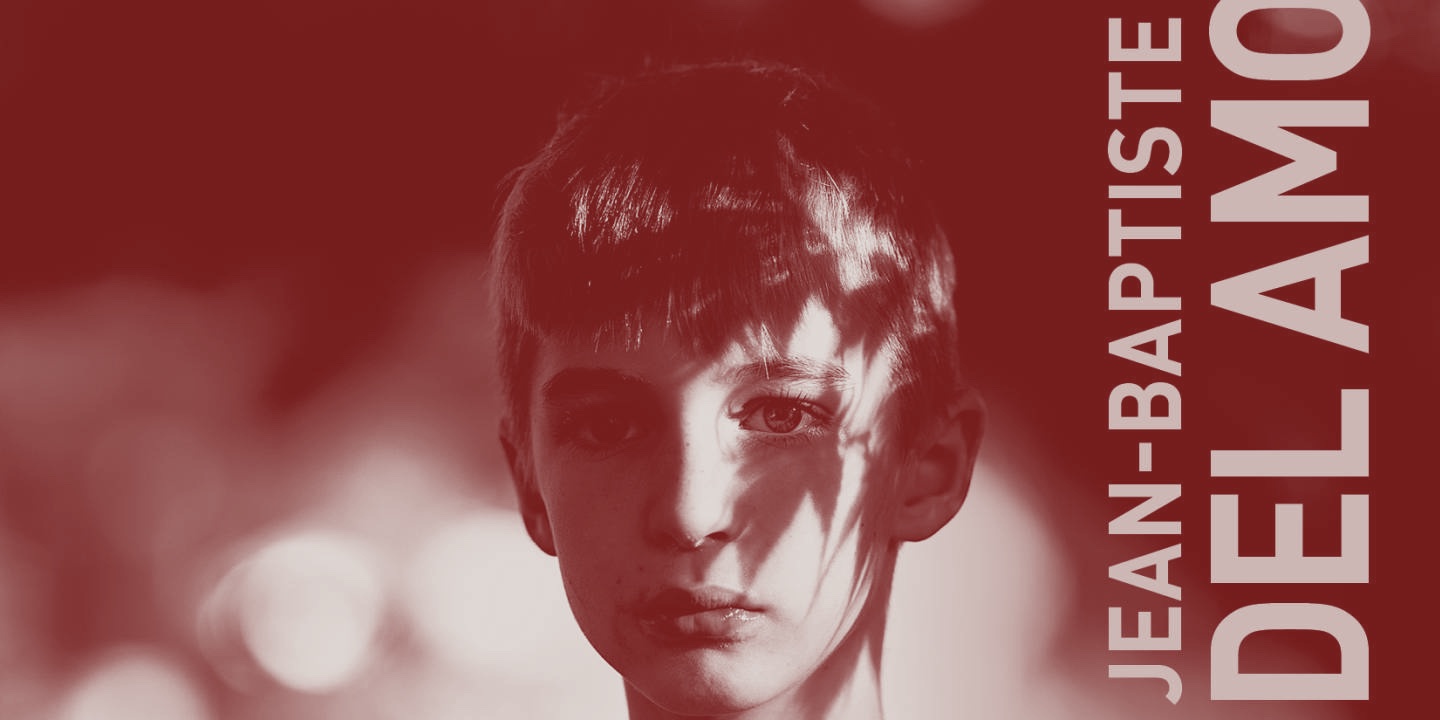A father, a mother, a son, without a first name, as if they were resonating in each of us, and this trio trapped by violence, Jean-Baptiste Del Amo creates a thriller whose tragic end the reader quickly sees.
Virginie Bloch-Lainé
Translated from AOC.media: De père en fils, la violence immuable – sur Le fils de l’homme de Jean-Baptiste Del Amo by Ramona Frost for Futuristika.
Among all the fathers whose portrait this literary return paints, here is one that is particularly brutal and in many ways, universal. Despite all his faults, the reader recognizes in this man some invariants of the fathers: a way of moving, of exercising his authority, of leading in the child a desire for protection and the hope of looking at the world perched on his shoulders.
Jean-Baptiste Del Amo knows how to give rise to these desires thanks to his art of describing stealth attitudes and gestures: a jump over a railing, an arm nonchalantly placed on a steel bar are enough to make the child blissful in front of the father.
The fifth novel by this 39-year-old writer, The Son of Man, designates both a father and a child. This is the story of transmitted, repeated violence, which may recur over several generations. As harsh as Règne animal (Gallimard, 2016), the previous novel by Jean-Baptiste Del Amo that already drew a genealogy, The Son of Man is inscribed both the genre of the mythological narrative and in the present. Jean-Baptiste Del Amo presents an environment, a misery, but he does it in passing. The writer whose style is austere does not dwell on anything.
The Son of Man is a tragedy, a thriller, in the manner of Faulkner. A man returns by force in the life of a woman with whom he had a son now nine years old. The returnee requires the mother-child duo to leave the city (never named) and follow it to the “Rocks”, an abandoned house located in the mountains.
The “Rocks”: this name announces a fall and injuries, open fractures. The father himself lived in Les Roches with his father. We learn that, devastated by the death of his wife, this father, man’s father, has therefore become crazy and dangerous for his son who fled the place at the age of fifteen. By spinning, he saved his skin. He moved to the city where he met “the mother”. They had fun with a “band” of friends, they spent time doing “silt shopping” in the car. When they were talking, they put the beer packs on the hood of the cars. Now, the mother “works in a company canteen in the industrial zone across the city and does housework in a kindergarten at the end of the day. ”
The departure to Les Roches puts an end to this routine, which was suitable for the mother and son. A former unhappy child, the father puts his step in those of his father, tyrannical, angry. “Hate” and “sentment” inhabit him, he takes revenge on the evil that “the providence” has done to him. As an animal kingdom, The Son of Man does not invent a nature that would be a lost paradise. The descriptions are superb but the landscape is disturbing: “The night now carries in it the expectation of dawn, this tiny variation that detaches the contours of the world without them being yet intelligible, only letting degrees of darkness appear. A previously invisible veil tears up; everything that stood entrenched in the backs of the night is suddenly bathed in a bluish glow that did not seem to come from the outside of things but rather emanate from them. ”
What about the mother? She gives in to the father knowing that she should resist him and then initiates a round of submissions: the obedient mother demands that the child submit like her to this man: “Doesn’t your father kiss you? “. No. It is also on the child’s neck, as if he wanted to put it down, that the father “places one of his hands” the first time he squeezes it against him.
None of the three protagonists of the Son of Man – the father, the mother, the son – is designated by a first name, so these characters can represent anyone; all of us, for example. In addition, as a fore of the novel, Jean-Baptiste Del Amo placed a brief short story that is italicized. This is the story of how men and women have survived since the dawn of time. This is not the most successful part of the book as it is solemn and explicit, but it announces the morality of history, which is not cheerful, but which is quite true: violence flows through the veins of certain lines and is exercised against children, small terrorized animals poorly mastering language.
The Son of Man is a silent book, fury makes no noise. Words that hurt flow away, without comment. And if the mother, however protective she may be, fails to save the skin of her offspring, it is because she lacks physical strength, but it is for another reason: she has the easy concession, she is porous to the words that demean her because she has bathed in this depreciating climate. “No one but me would be willing to offer you anything, do you hear? “, for example, the father says to the mother. She knows it’s wrong but she keeps silent and ends up believing it.
Jean-Baptiste Del Amo never frontally characterizes the psychology of his characters; it emerges from itself. He reserves the precision of his words to other fields, to other things. Nevertheless, in a few sentences, the character of each member of the trio appears. The reader then gets an idea of it, according to his personal history. Children of terrible parents, unite.
Fathers and mothers are co-responsible for the repetition of misfortunes: the writer evokes in the middle of the novel the heroine’s mother, “the grandmother”, therefore, who, when she visited him, stood in his daughter’s living room “with her handbag held on her ostensibly tight knees”, like a duègne, and it is understood The heroine adopts this low position with her son’s father in part because of her own mother who has accustomed her to bending her spine. “The old genitrice” from the petty bourgeoisie, closed on herself, wiped her feet on her daughter as if on a doormat. This is the result, thank you.
Jean-Baptiste Del Amo’s language is beautiful, elegant, both refined and rich in precise descriptions of postures. These passages are dazzling because they sound so right. The author records the stealth movements very well: a cigarette that is lit, two hands that rests on the neck so that the head rests, or the “agile jump on the steel ramp” of a track of self-buffers.
He is careful that the bodies reflect the personality of their owner. We have the body we want and it reflects our depth: the father is thin and sneaks everywhere; so he was probably able to escape from his own father. Conversely, “Everything in the mother’s body has come into resistance against that of the grandmother: her full shapes, her supple skin, her henna-tinted hair that she does not comb and lets dry in the open air. Unlike the duègne, the mother is generous; the slowness of her movements, when she is happy, confirms it. Jean-Baptiste Del Amo devotes a beautiful page to the way the mother moves in front of her son, without “false modesty”.
The Son of Man is not a burning descent of fathers, and although tragedy is on the way, moments of tenderness punctuate the novel. Before being nothing more than a ball of malevolence and an incendiary, the father tamed his son. A relationship is created between them that the reader discovers from the child’s point of view and that Jean-Baptiste Del Amo wonderfully draws, in a few scenes, a few words. At the fair, the child groped in search of affection. The length and complexity of the sentence reflect the fog through which he makes his way: “He would like to share a little of his joy and borrow from the tenderness that he usually shows to the mother, transposes it towards the father, with the prescience of this impediment, of this embarrassment that always presides over the manifestations of feelings between men, between fathers and their sons And when the man passes his arm over the boy’s shoulders, behind the headrest, no longer directing the car with a flexible and expert hand, it seems to the son has managed to conquer a little of his consideration, that the father, who a few moments earlier, still represented for him an esoteric, hostile block, opens up to him, or tells him by this en ”
The Son of Man is not a thesis book. He does not advocate a deconstruction of men. He is not pleading for anything. He paints relationships governed by fear, an ancestral marital and parental pattern, which some know they do not reproduce. Jean-Baptiste Del Amo does not throw everything away with bath water: there are precious behaviors between fathers and sons as well as between mothers and sons that are not interchangeable between the sexes. Emmanuelle Lambert in Le Garçon de mon père (Stock) or Marc Dugain in La Volonté (Gallimard) seem to think so too.
![[Futuristika!]](https://futuristika.org/wp-content/uploads/2020/12/futuristika-logo.png)

